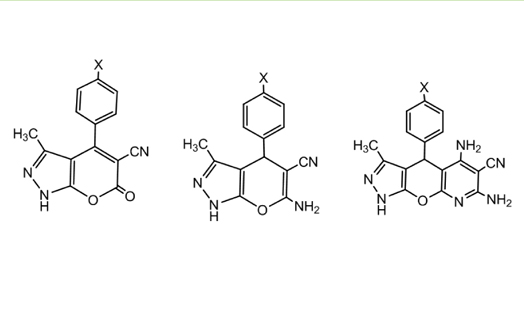Convenient Synthesis, Characterization, Cytotoxicity and Toxicity of Pyrazole Derivatives
DOI:
https://doi.org/10.17344/acsi.2014.828Keywords:
pyrazole, pyrano[2, 3-c]pyrazole, pyrazolo[3, 4-d]pyrimidine, 4-d]thiazole, cytotoxicityAbstract
3-Methyl-1H-pyrazol-5(4H)-one (1) was used as a template to develop new anticancer compounds and investigate their SAR. The ring modification of compound 1 occurred through its reaction with aromatic aldehydes and different reagents to afford the corresponding 6-oxopyrano[2,3-c]pyrazoles4a-c and their amino analogues 6-aminopyrano[2,3-c]pyrazoles6a-c, 8; the pyrazolopyrano[2,3-b]pyridines 10a-c and the chromenopyrano[2,3-c]pyrzolones13, 14. The reaction of compound 1 with thiourea and appropriate aromatic aldehydes afforded the pyrazolo[3,4-d]pyrimidine derivatives 17a-c. On the other hand, the pyrazolo[3,4-d]thiazole derivatives 22a-d were obtained via the reaction of 1 with sulpher and aryl isothiocyanates in presence of triethylamine. The reaction of compound 1 with phenylisothiocyanate followed by treatment with the a-halocarbonyl compounds 24a-c afforded the thiazole derivatives 25a-c. The synthesized products were evaluated for their cytotoxicity against cancer and normal cell lines. Most compounds showed significant anticancer activity without affecting the normal fibroblast cells. The toxicity of the mostpontent cytotoxic compounds was measured using Brine-Shrimp Lethality Assay.

Downloads
Additional Files
Published
Issue
Section
License
Except where otherwise noted, articles in this journal are published under the Creative Commons Attribution 4.0 International License
